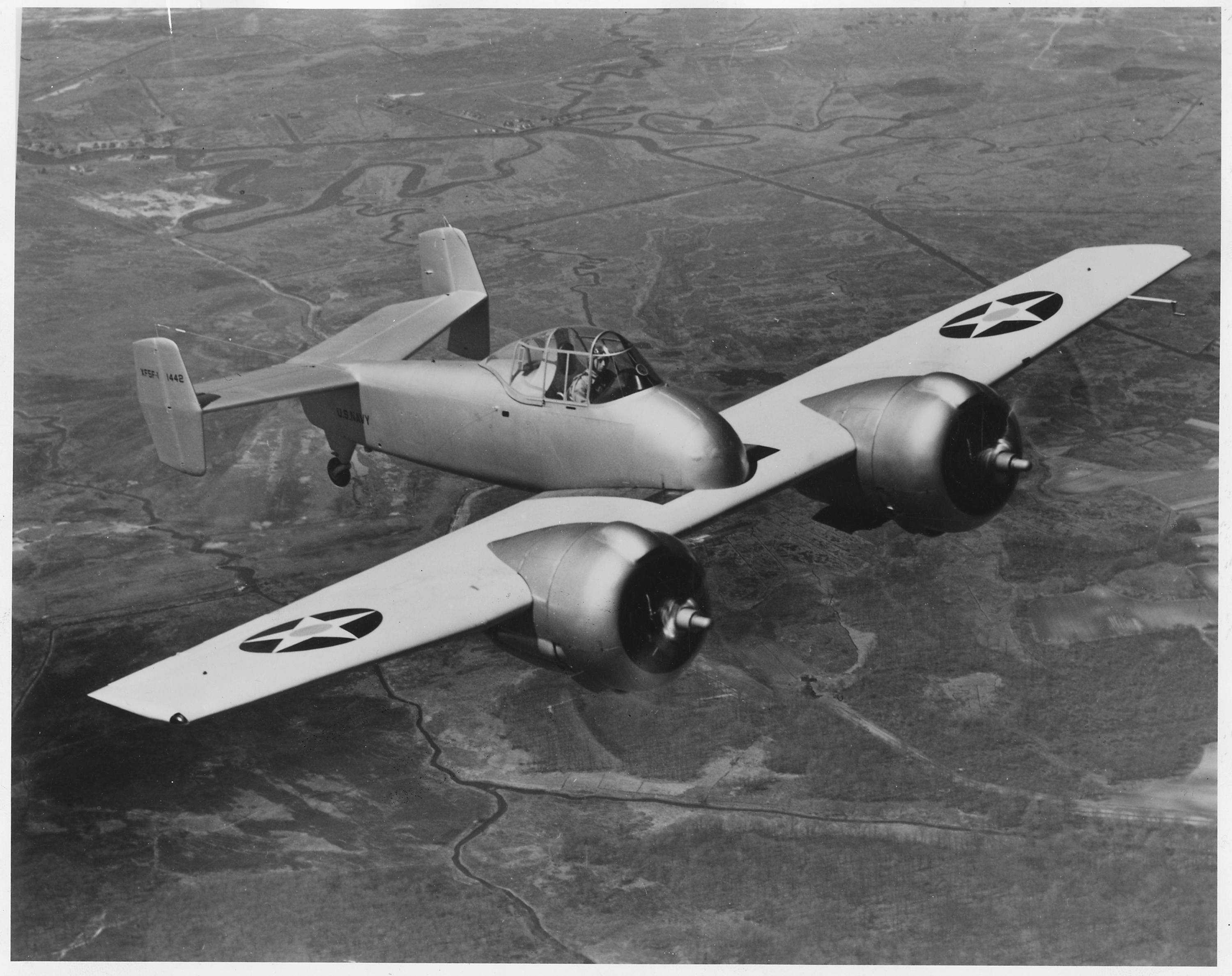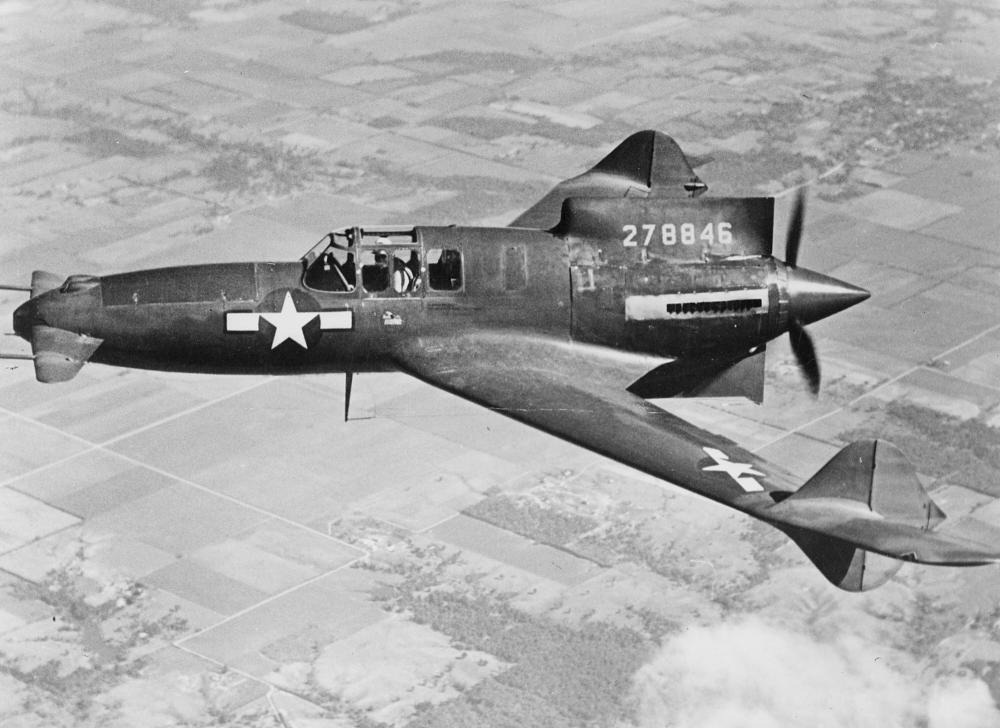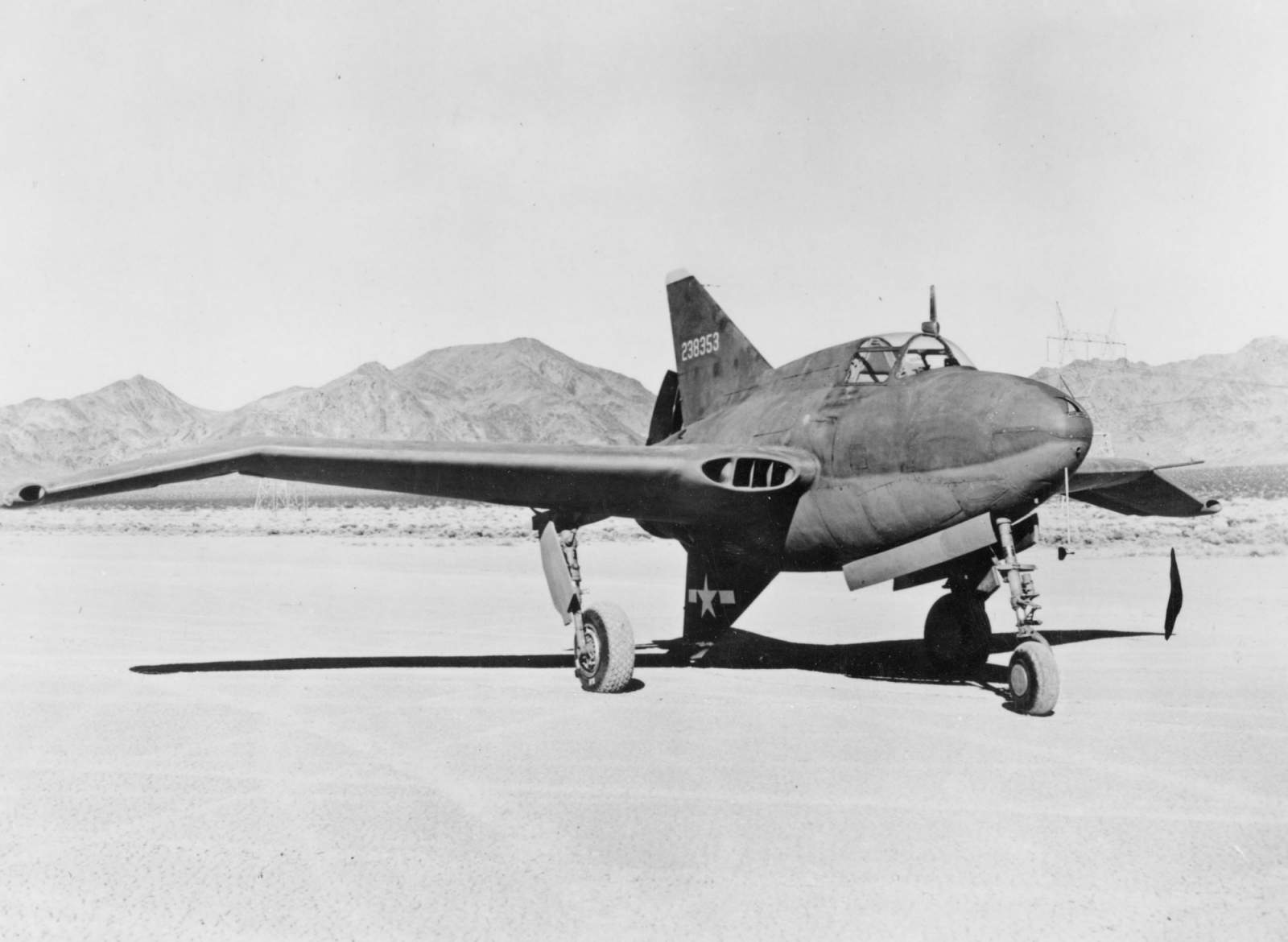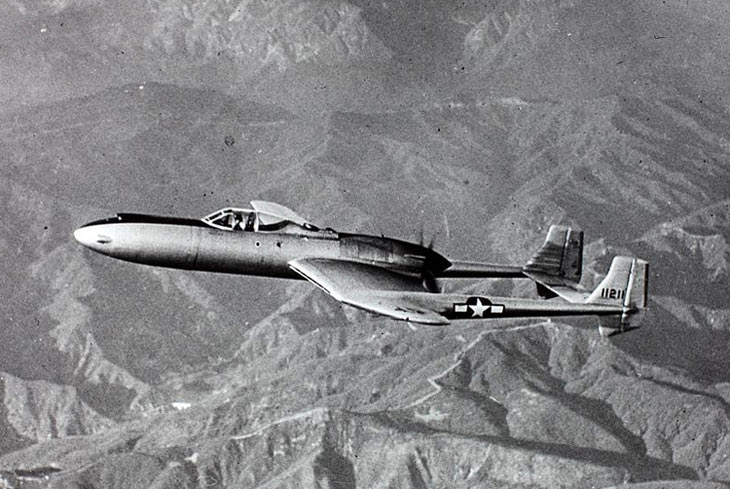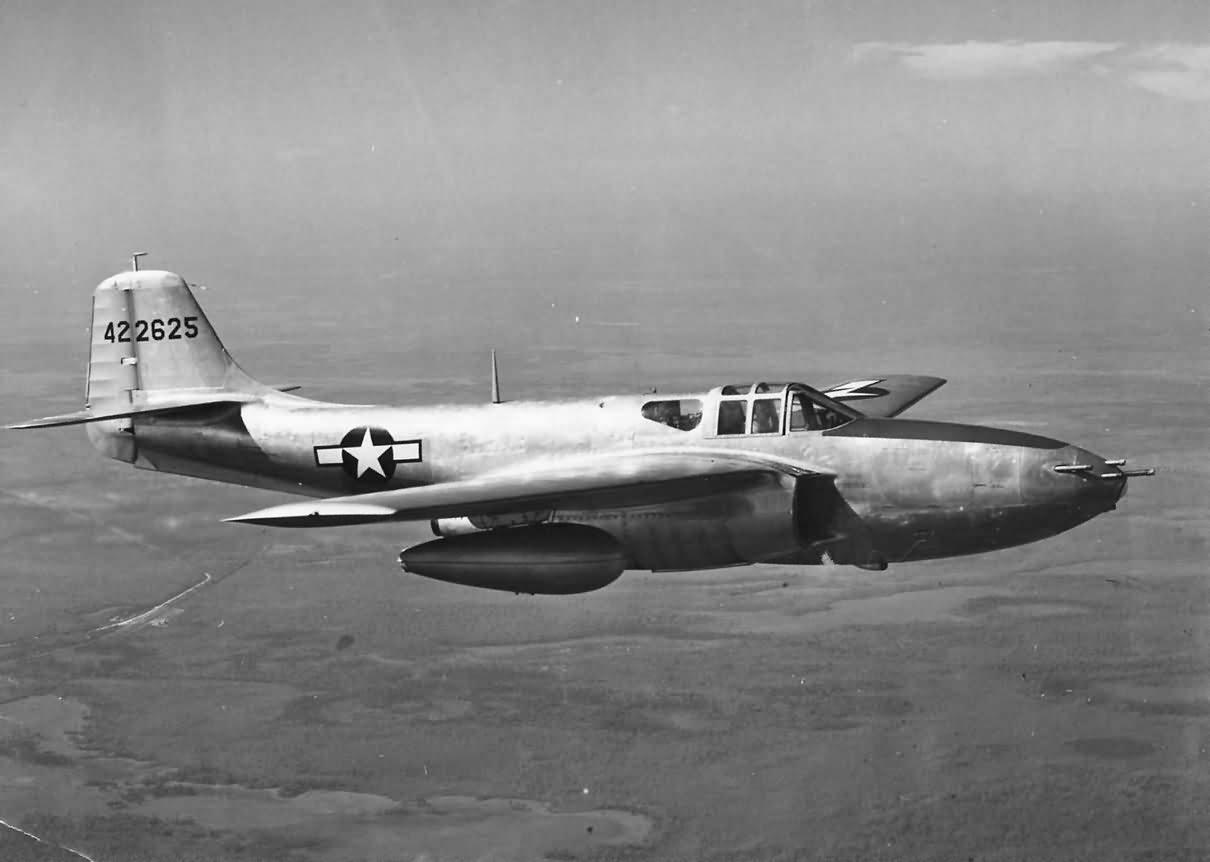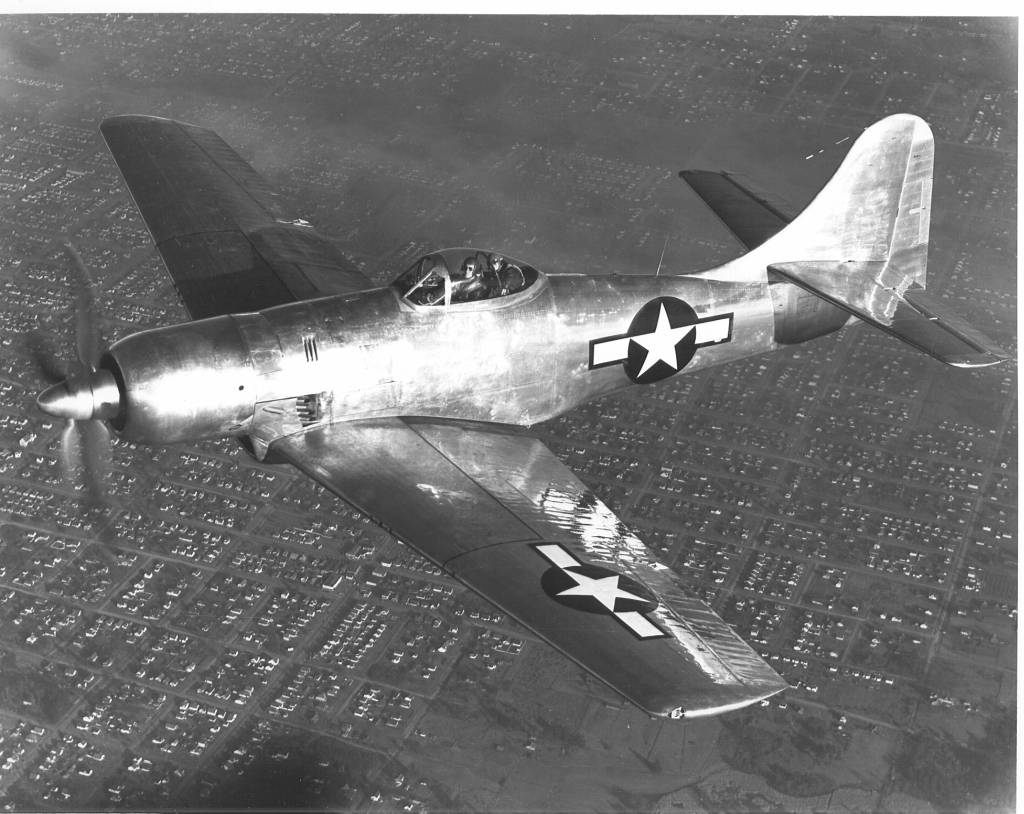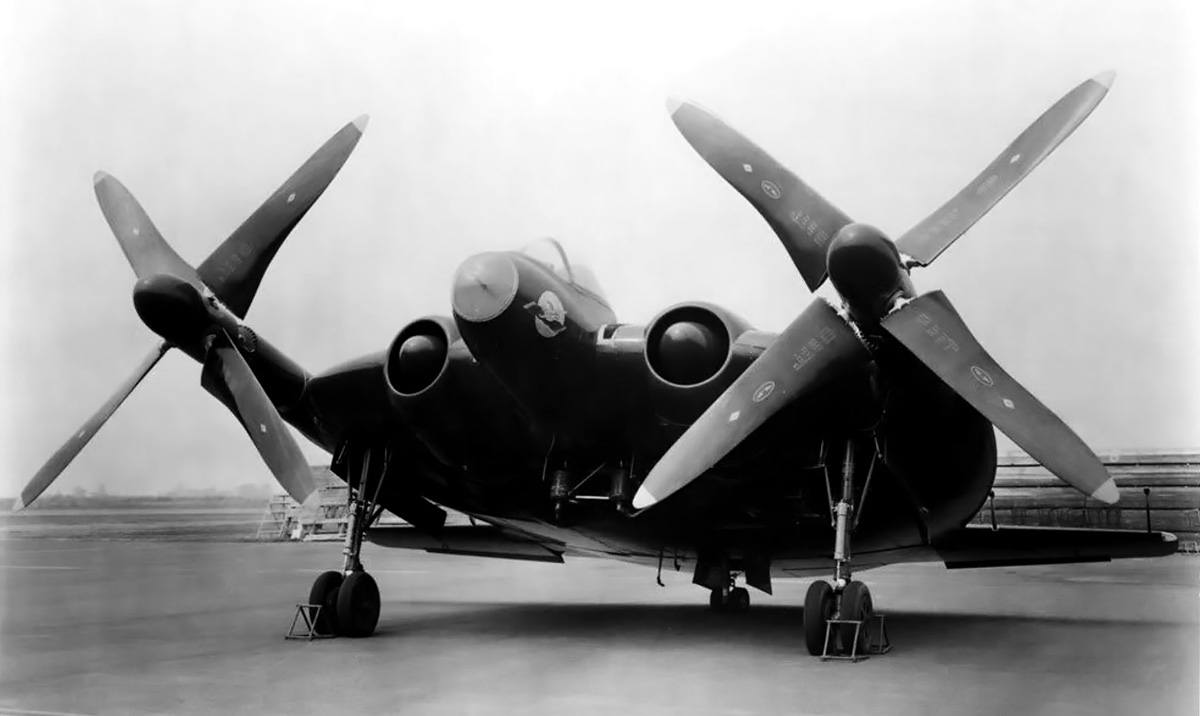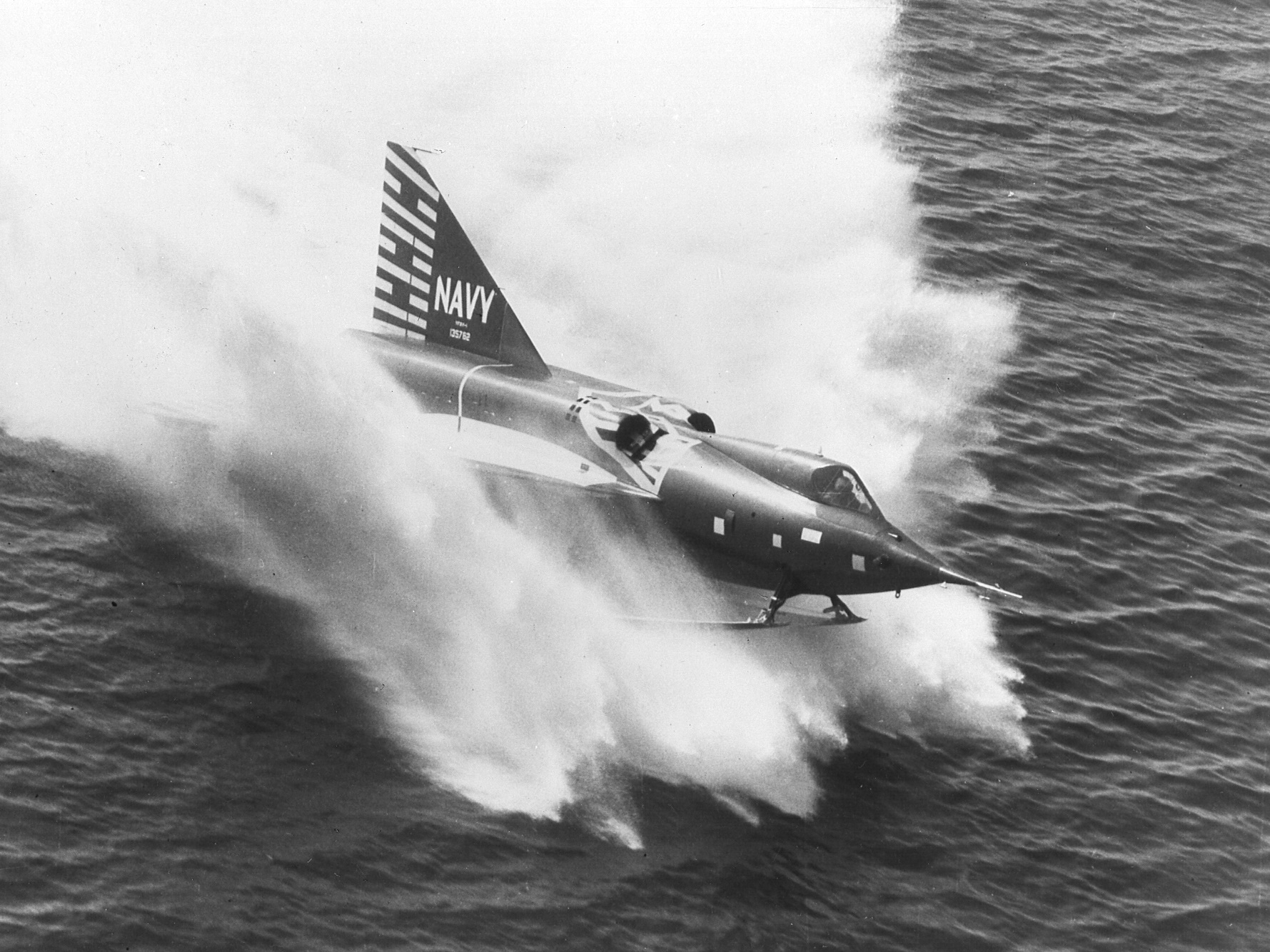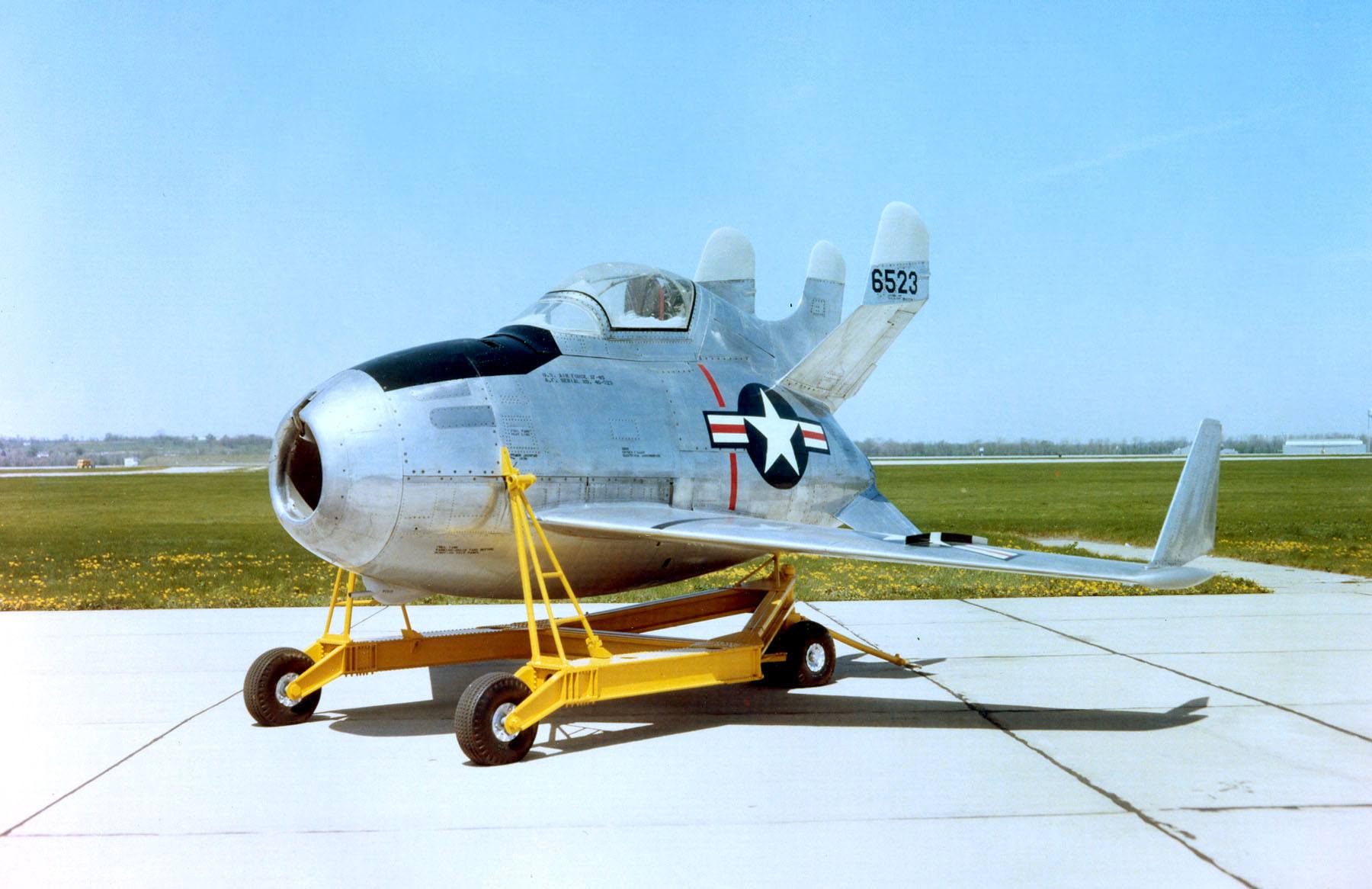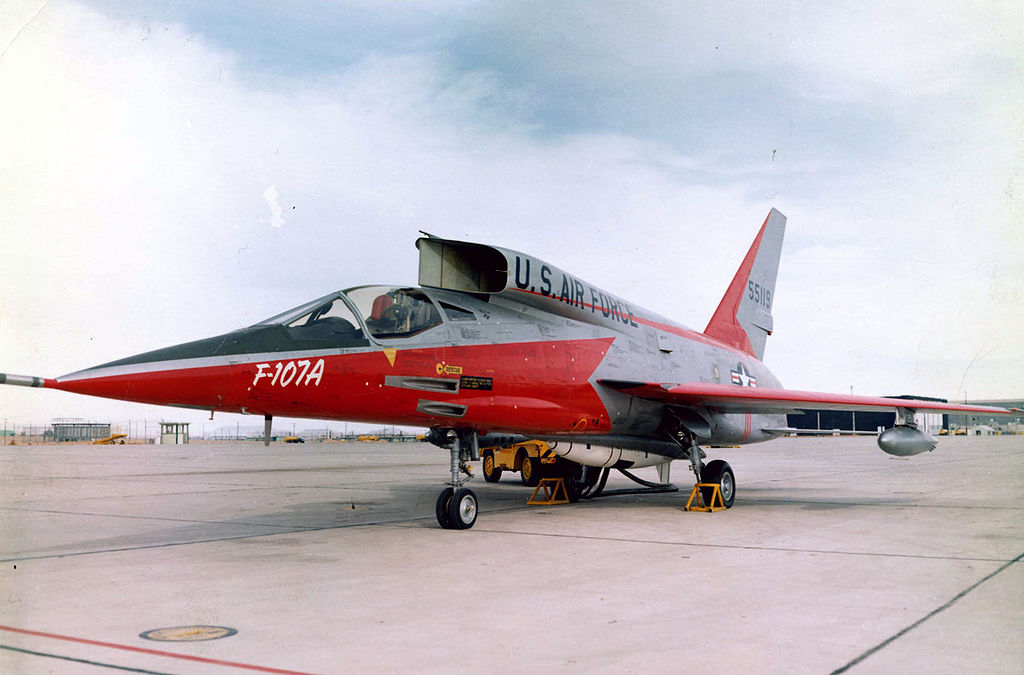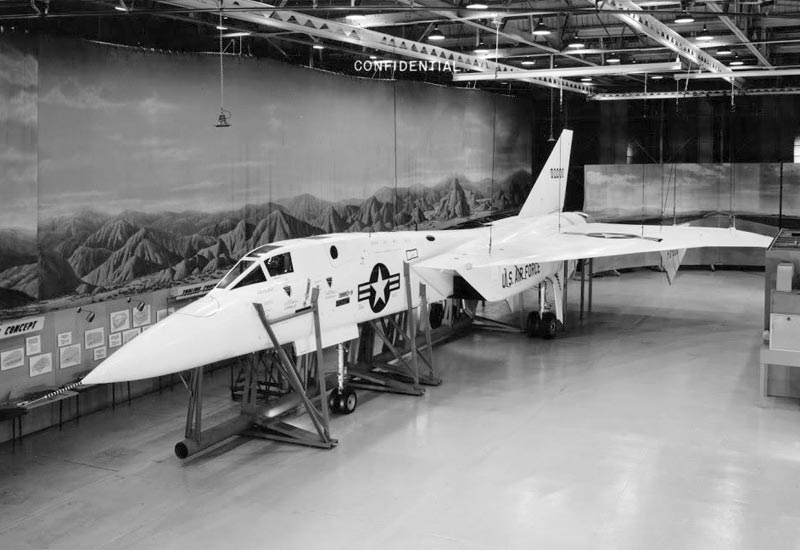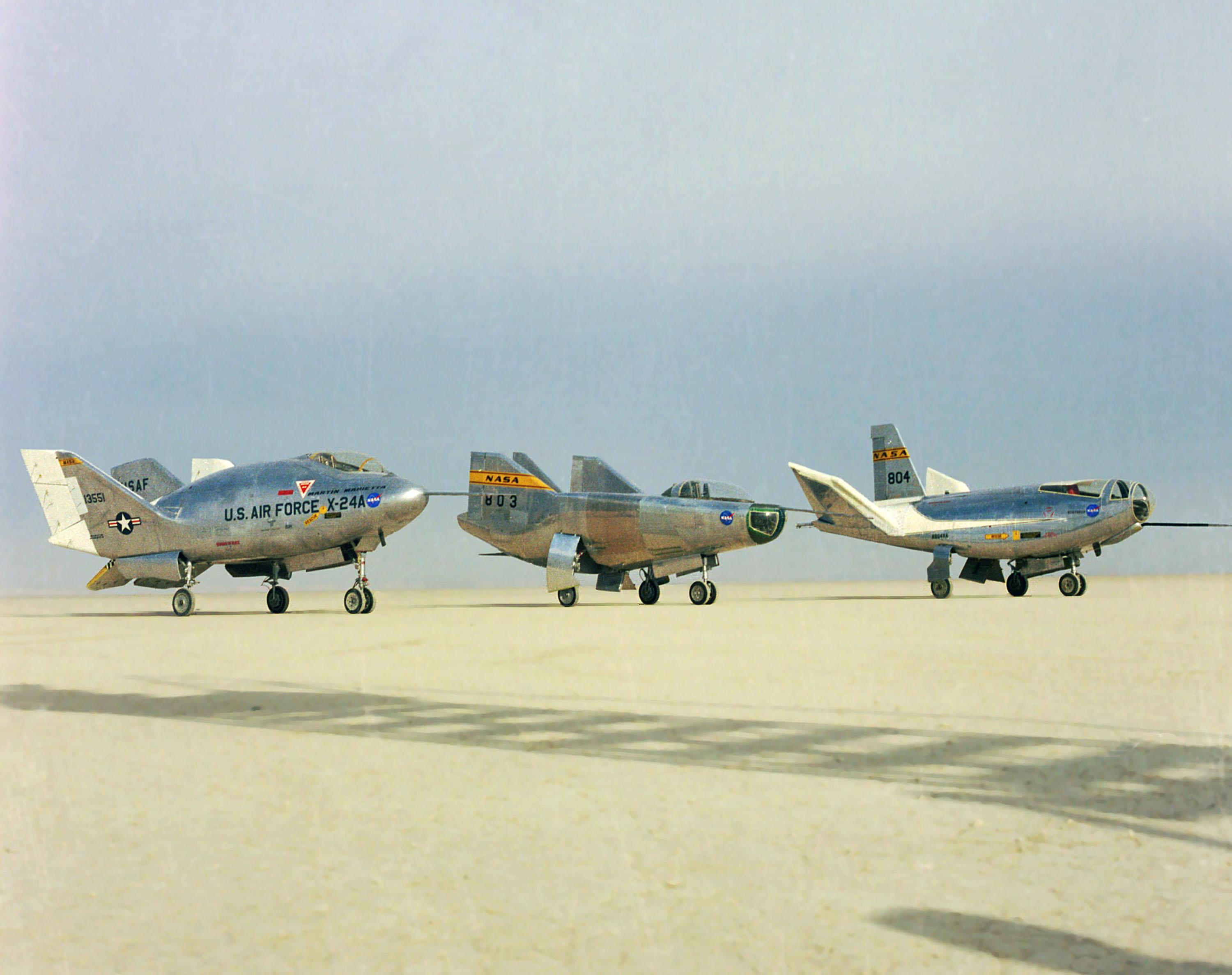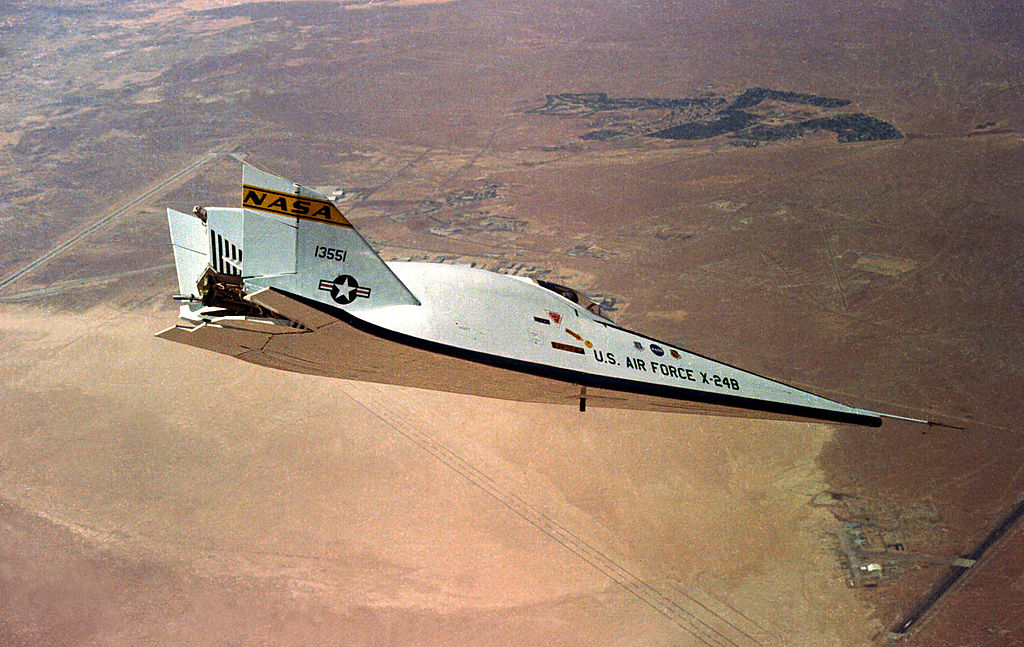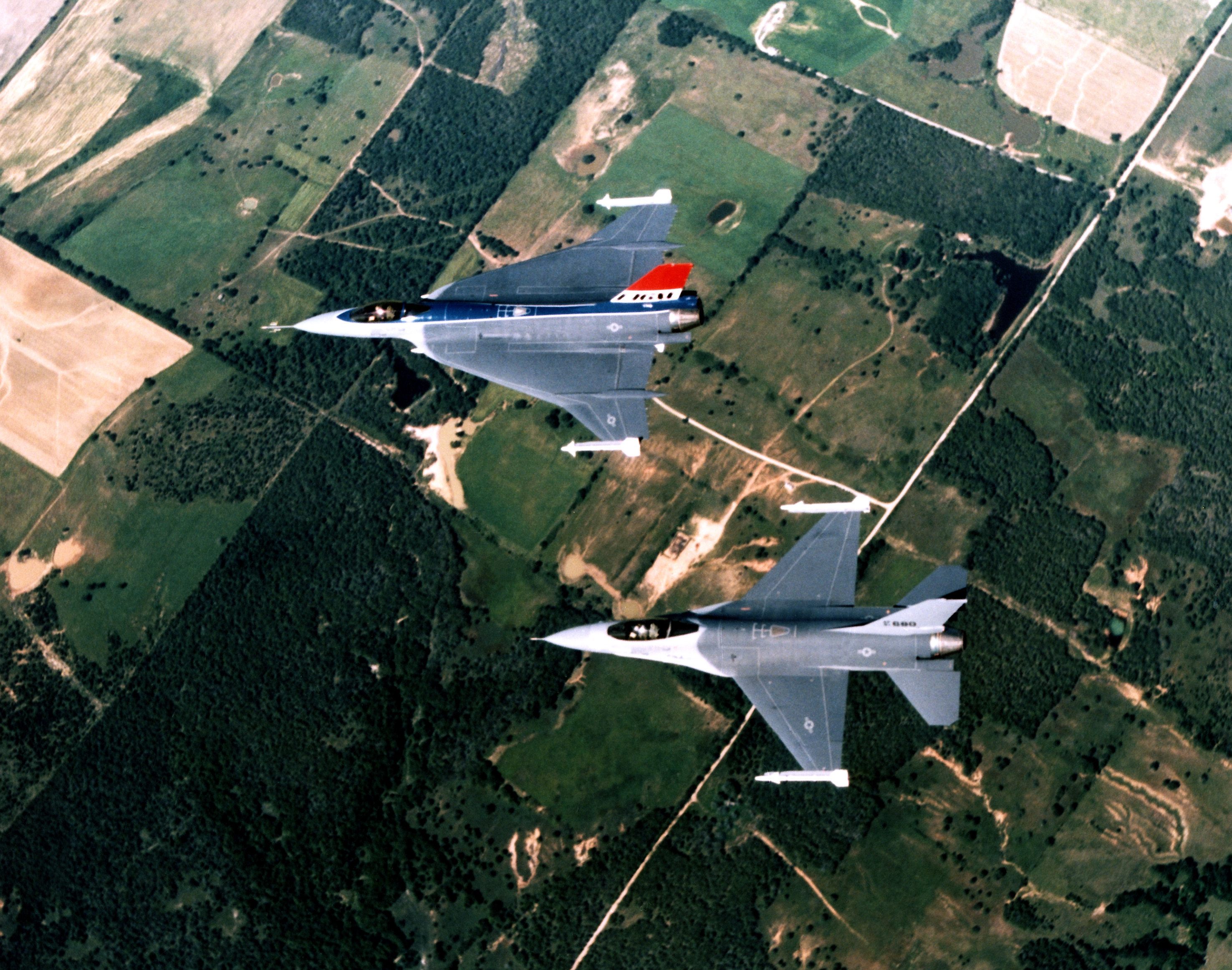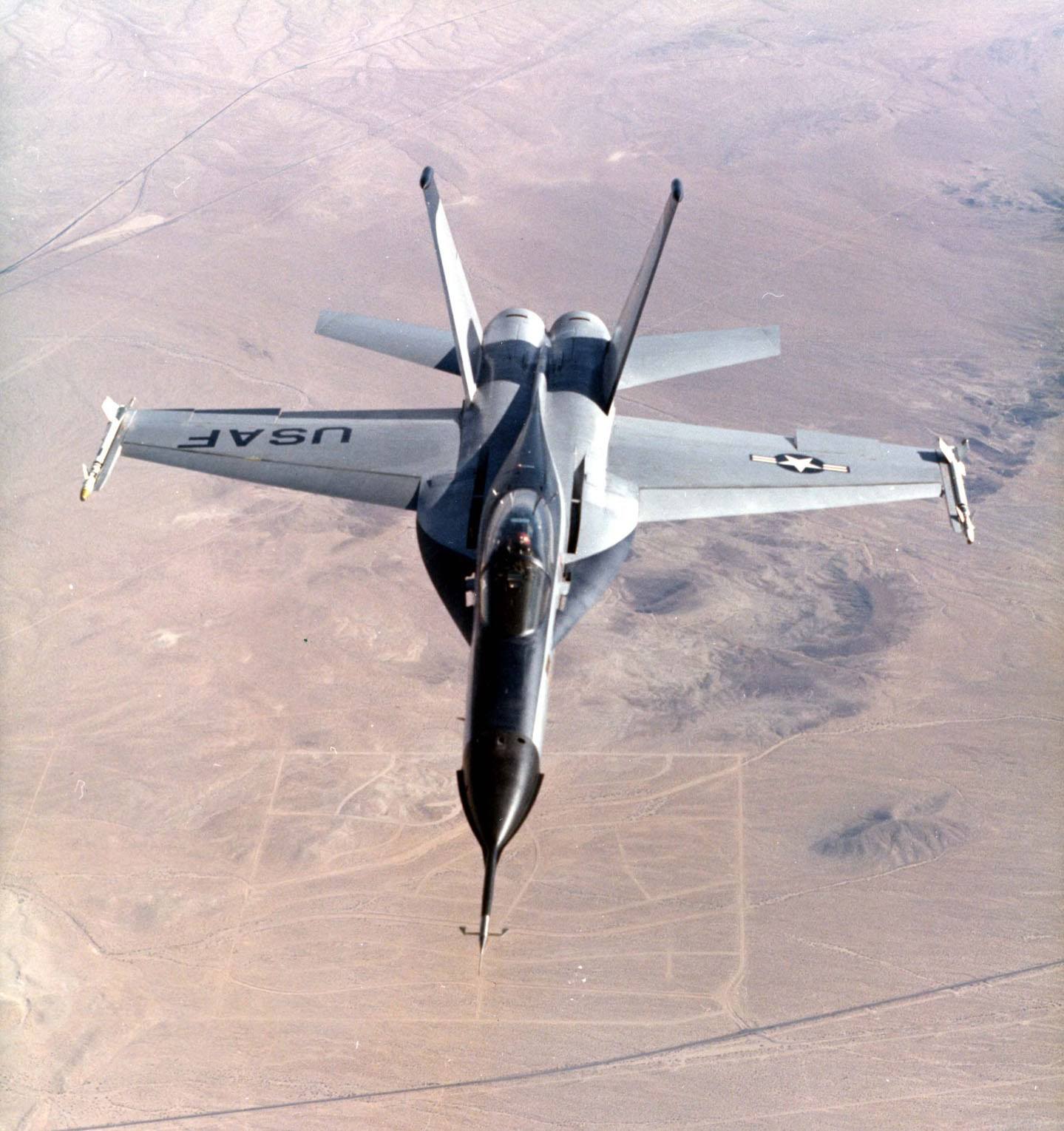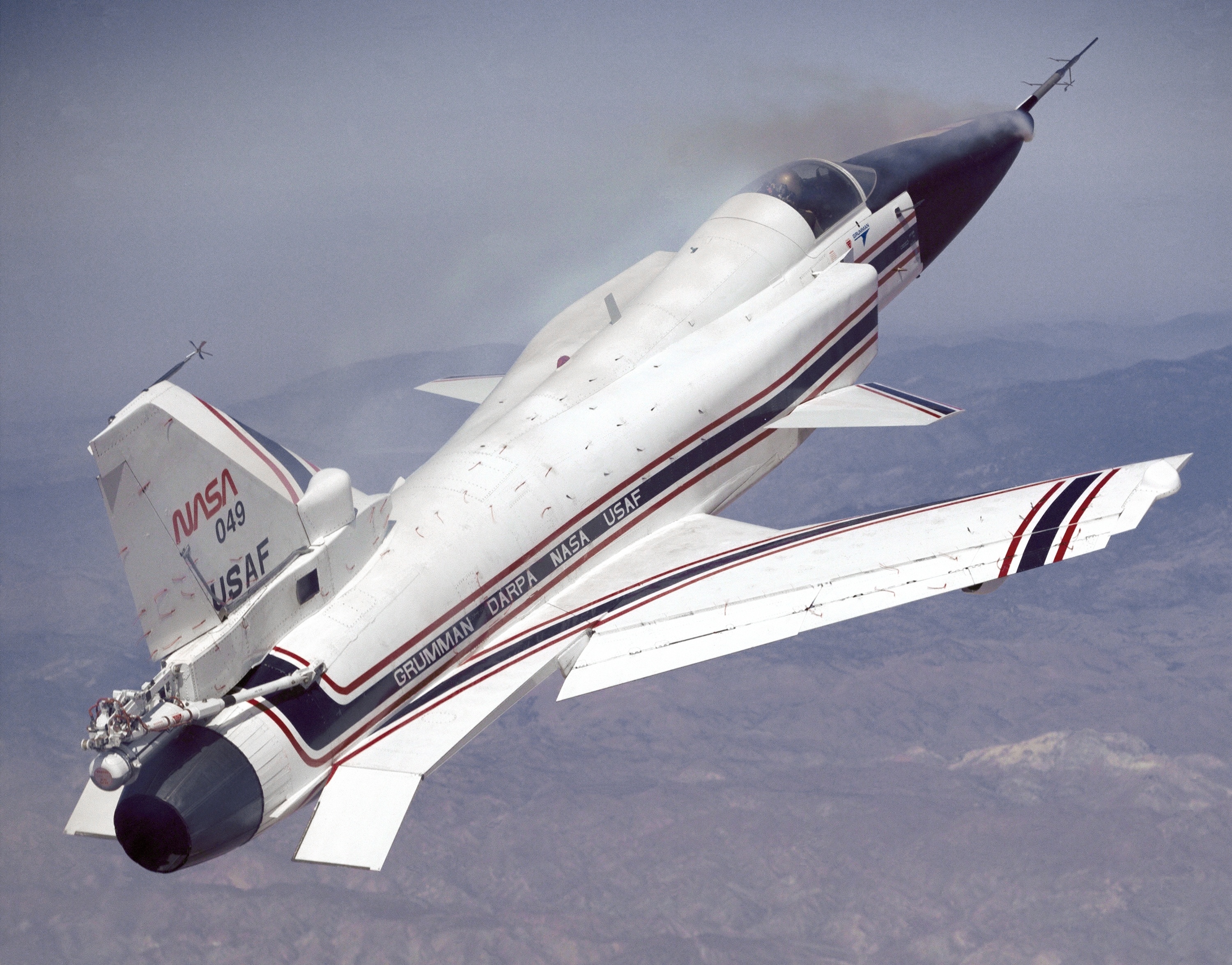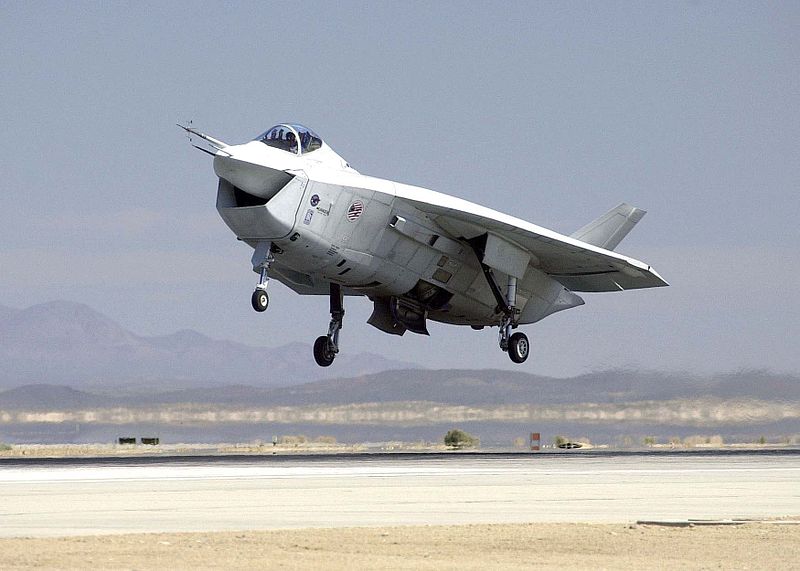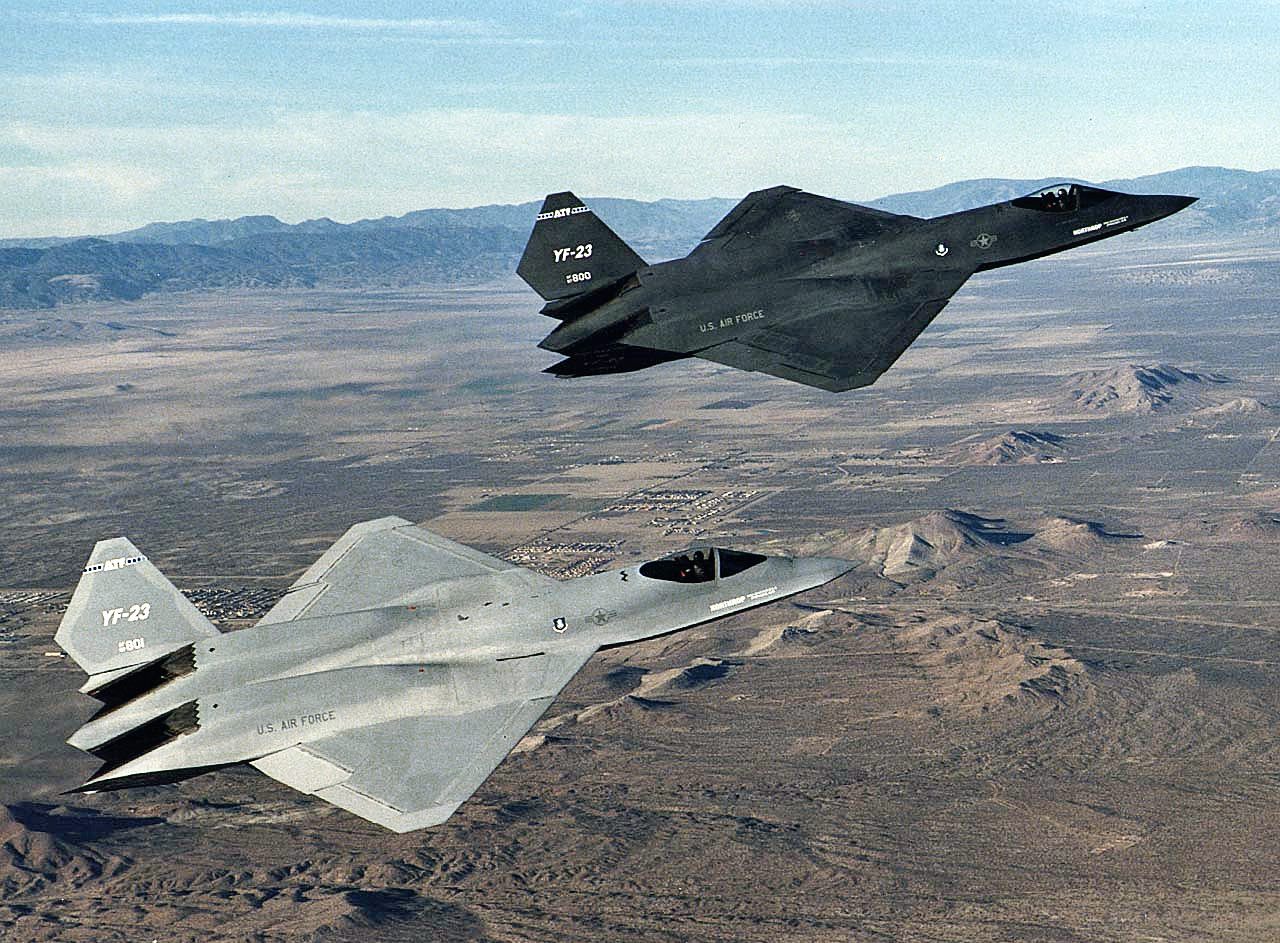When it comes to aerial combat, a new and improved warplane can make everything your opponent has in the air completely obsolete overnight. Japan’s “Zero” ruled the skies over the Pacific at the outset of World War II and the MiG-15 was dominant in the beginning of the Korean War, but United States defense contractors turned out faster, more agile, and more deadly planes like the F6F Hellcat or the F-86 Sabre and gave us air supremacy on such a level that it is as if owning the skies is an American birthright. These 20 aircraft didn’t make it to the production line, but without them we wouldn’t have pushed the design envelope and gained the technology that produced Super Hornets, Strike Eagles, stealth bombers, and even a Space Shuttle.
Grumman XF5F
[in_content_ad]
If Pablo Picasso became an aircraft designer instead of an artist, Grumman’s X5F5 Skyrocket would have been his best work. Although it looked like a caricature of today’s A-10 Warthog – on drugs – it handled like a dream. In fact, it almost beat out a number of other prototypes and proven fighters during a 1941 competition for the Navy.
Curtiss-Wright XP-55
[in_content_ad]
In 1939, the Army Air Corps was looking for improved and better-armed designs over their existing arsenal of warplanes. The service got several revolutionary, outside-the-box design entries. Perhaps the most interesting prototype is the XP-55 Ascender (also known as the “Ass-ender” due to it’s pusher engine). The XP-55 featured revolutionary swept wings, canards, and twin wing-mounted tails, and the plane’s designers had to invent a system to jettison the propeller from the aircraft so the pilot could bail out.
Northrop XP-56
[in_content_ad_ora]
One of the Ascender’s doomed competitors was the “Black Bullet.” Instead of a conventional tail the XP-56 used dorsal fins to stabilize the aircraft. A pusher engine with counter-rotating propellers powered one of Northrop’s first flying wings, a design that would ultimately lead to the B-2 stealth bomber decades later.
Vultee XP-54
[in_content_ad]
With its twin boom, this odd prototype resembles a P-38 Lightning from a distance. The XP-54 “Swoose Goose” also featured a pusher engine, and to eject from the aircraft, the pilot exited from the bottom of the aircraft to clear the propeller. Its nose could also move independently from the rest of the aircraft, enabling the pilot to aim the weapons without altering the flight path. Although the Swoose Goose beat out the Ascender and Black Bullet, it’s handling didn’t meet the Army’s expectations and the project was cancelled.
[in_content_ad_jw_player]
Bell XP-59A
[in_content_ad]
The Bell XP-59 was actually two planes: one was a failed early-1940s twin-boom pusher prototype and the other was America’s first jet warplane. After seeing Britain’s first jet fighter, Gen. Henry “Hap” Arnold wanted an American jet. To maintain project secrecy, the military designated the prototype the XP-59A and attached a propeller to the nose when it wasn’t in the air. Although it never entered production as a fighter, a few dozen “Airacomets” were built and American military aviators used the XP-59 to learn how to fly military jets.
Boeing XF8B
[in_content_ad]
With an invasion of Japan looming on the horizon, Boeing built a massive fighter that could do it all: interceptor, long-range escort fighter, dive bomber, and torpedo bomber. The prototype featured two counter-rotating propellers and could carry two torpedoes or 6,400 lbs. of bombs in its internal bomb bay. With the end of World War II and the dawning of the jet age, the XF8B never went into production.
Vought XF5U
[in_content_ad]
Vought’s “Flying Flapjack” could well be what the stork brings if a toad, frisbee, and an airplane share a night of alcohol-induced passion. The rather unique XF5U was based on Vought’s earlier V-173 experimental flying disc design. Famed U.S. aviator Charles Lindbergh once flew the V-173 and was impressed with its handling and low-speed maneuverability. The advent of jet aircraft put an end to the XF5U program before it could fly, but the oddly beautiful prototype was so rugged that it took a wrecking ball to dismantle it.
Convair F2Y
[in_content_ad]
In 1948, the Navy held a contest for defense contractors to build a new supersonic interceptor aircraft. At this point in history, supersonic warplanes were not conducive to carriers, requiring long runways for takeoff and landing and lacking stability at low speeds. So Convair brought back the seaplane platform by putting skis on its F-102 Delta Dagger interceptor. The F2Y first flew in 1953 and the Navy toyed with the idea of putting Convair’s design on submarines. The unstable prototype was cancelled, but not before the F2Y became the first seaplane to fly Mach 1.
McDonnell XF-85
[in_content_ad]
In the interim period between World War II and the Korean War, fighter escorts could not come close to matching the range necessary to protect their bombers. Mid-air refueling hadn’t yet matured into a dependable practice, so the Air Force experimented with attaching tiny parasite fighters to the bombers. McDonnell’s XF-85 was just 14 feet long and had a 21-foot unfolded wingspan. The egg-shaped Goblin was intended to be carried in the bomb bay and released from a trapeze hook when enemy interceptors appeared, then return to the flying aircraft carrier. However, it couldn’t compete with conventional aircraft and the program was cancelled in 1949.
McDonnell XF-88 Voodoo
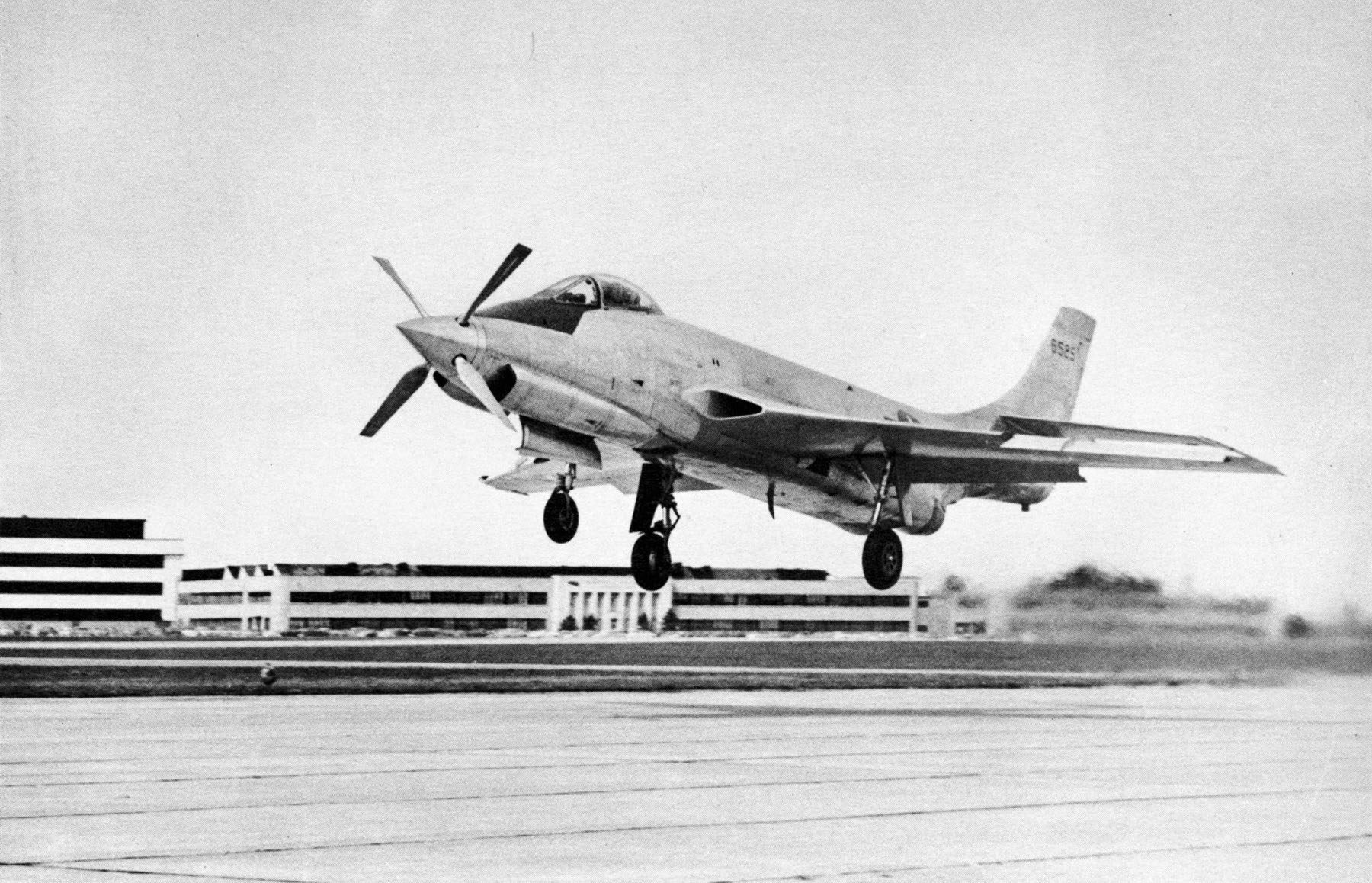
[in_content_ad]
When the Air Force wanted a jet-powered replacement for the P-51 Mustang as a penetration fighter/escort role, McDonnell submitted this hybrid jet/turboprop design. The XF-88 beat out its competition and became the first propeller plane to exceed Mach 1, but lessons learned from the Korean War led the Air Force to increase their requirements and the XF-88 program was cancelled.
North American XF-107
[in_content_ad]
North American’s entry for the Air Force’s tactical fighter/bomber competition was the F-107, referred to by its crews as the “man eater.” Since a nuclear weapon had to be mounted underneath the aircraft, North American designers positioned the jet’s air intake directly behind the cockpit. Although competition was close, it’s entirely possible that the threat of ejecting pilots being sucked into the engine played a role in Tactical Air Command’s decision to go with Republic’s F-105 Thunderchief.
[in_content_ad_bannersnack]
North American XF-108
[in_content_ad]
When the Air Force wanted a long-range, high-speed interceptor to defeat incoming Soviet supersonic bombers, North American Aviation came up with the XF-108. The “Rapier” design shared engine technology with the XB-70 Valkyrie supersonic bomber prototype and would have reached speeds of Mach 3, and engage bomber formations 100 miles away. However, the Soviet Union shifted their focus to missiles instead of fleets of nuclear-armed bombers and the XF-108 project was cancelled before any actual aircraft could be built.
Northrop HL-10
[in_content_ad]
There are flying wings, which are wings without fuselages, then there are lifting bodies—fuselages without wings. One example of a lifting body is the Northrop HL-10 (right), which would be dropped from a B-52 at high altitudes, then landed at Edwards Air Force Base’s Rogers Dry Lake after a brief flight, paving the way for future “space shuttle” operations. Also pictured are Martin’s X-24A (left) and Northrop’s M2-F2 (center).
Martin Marietta X-24B
[in_content_ad]
The Air Force returned one of the X-24A lifting bodies to Martin Marietta in 1973 to modify into a “flying flatiron” design, which features a higher lift-to-drag ratio and more closely resembles the space shuttle, which was then known as the Integrated Launch and Re-entry Vehicle concept.
General Dynamics F-16XL
[in_content_ad]
When the Air Force began looking to replace the aging F-111 Aardvark for interdiction/deep strike missions, they opened up the Enhanced Tactical Fighter (later Dual-Role Fighter) competition in 1980. General Dynamics offered a “cranked arrow” delta wing version (top) of their existing F-16 Fighting Falcon (bottom), but McDonnell Douglas beat out the F-16XL with their two-seat F-15E Strike Eagle.
Northrop YF-17 Cobra
[in_content_ad]
Needing a plane for the jobs the larger and more expensive F-15s couldn’t do, the Air Force opened up the Lightweight Fighter competition in 1971. Northrop’s YF-17, which is based on their F-5E Tiger II design, may have lost out to General Dynamics YF-16, but a larger scale version of the Cobra turned into the F/A-18 Hornet.
Northrop YA-9A
[in_content_ad]
In 1972, the Air Force conducted a fly-off competition between Northrop’s YA-9A and Fairchild Republic’s YA-10A prototypes. The winner would become the service’s new close air support platform, replacing the aging propeller-driven A-1 Skyraider. While the YA-9 had several advantages over its competitor, the A-10’s engines offered greater survivability and the double tail did a better job of hiding the engine exhaust’s infrared signature.
Grumman X-29
[in_content_ad]
Nazi Germany had tried forward-swept wings during World War II, but the design wasn’t feasible for a combat aircraft until the invention of composite materials like carbon fiber. Like the YF-17, the cutting-edge supersonic X-29 was based on a Grumman F-5 Freedom Fighter airframe but features canard wings and a computerized fly-by-wire control system.
Boeing X-32
[in_content_ad]
Boeing’s entry for the Joint Strike Fighter competition was the X-32, going head-to-head with the Lockheed Martin X-35. Boeing designed an “A” version for carrier operations and a “B” model for short takeoff and vertical landing since the winning plane would eventually replace the F-16, F/A-18, and AV-8B. The X-32 performed admirably, but ultimately lost out to the X-35 in 2001.
Northrop Grumman YF-23
[in_content_ad]
The Air Force pitted the YF-23 against Lockheed’s YF-22 during the Advanced Tactical Fighter competition, and the winner would eventually replace the aging F-15 Eagle. Both prototypes performed well when they took to the skies in late 1990, but the YF-23’s radical design elements would be even more expensive than the F-22 Raptor, which costs a whopping $143 million per plane.

















